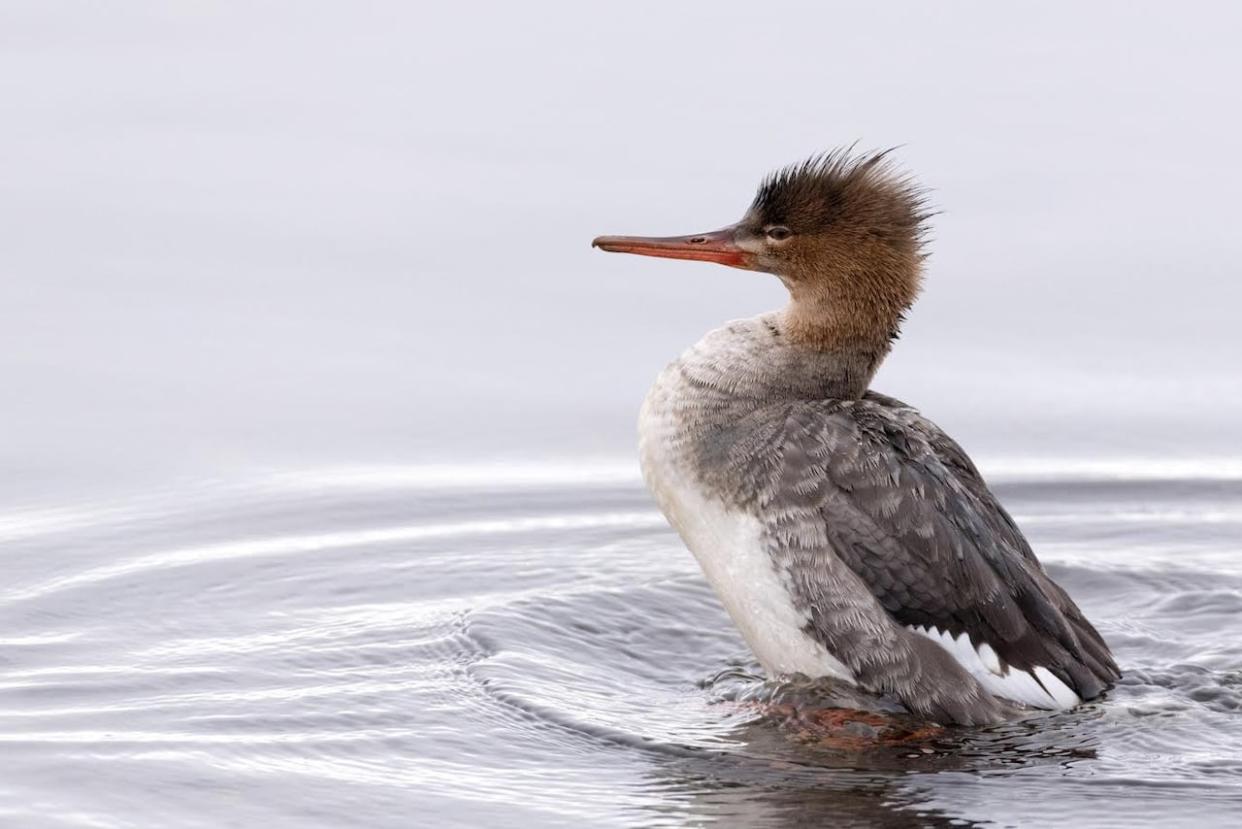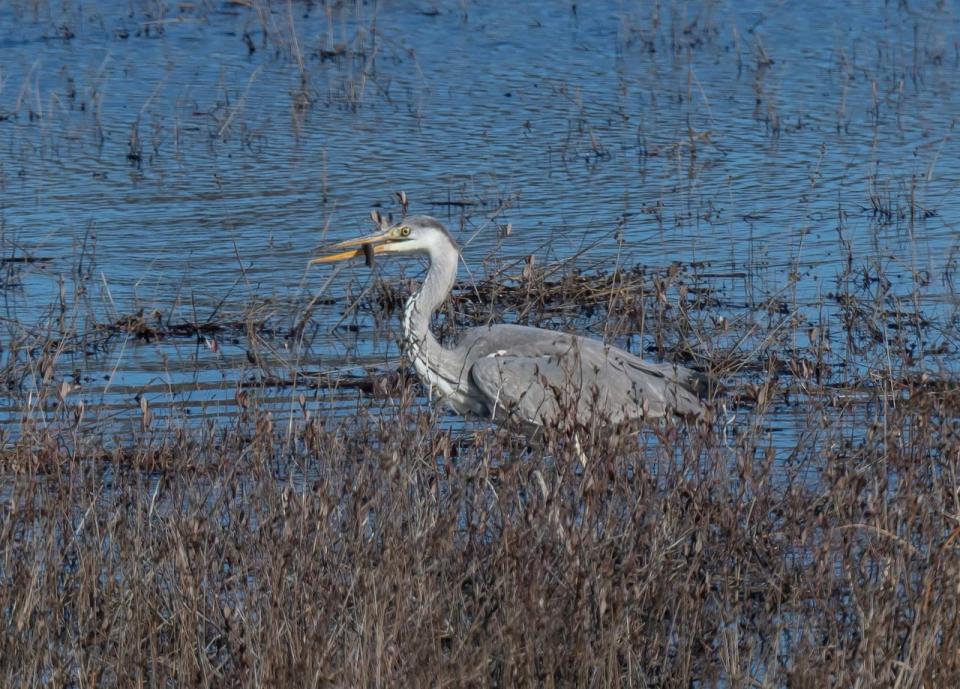Stuck at home this weekend? Here's something you can do to help protect wild birds

Avid birdwatchers will be keeping their eyes open over the long weekend as part of the 27th annual Great Backyard Bird Count — a worldwide event that encourages people to birdwatch from home.
The event, which runs Feb. 16-19, is spearheaded by the Cornell Lab of Ornithology in upstate New York and the National Audubon Society, in partnership with Birds Canada.
In 2023, half a million people participated in the count, reporting more than 7,500 species across 200 countries.
Not only does the global event help to better understand local bird populations but it also helps identify and track birds that shouldn't normally be in a given habitat, said Tony Millard, president of the Nova Scotia Bird Society.
"An example is a rare bird in this area at the moment called a Gray Heron," he said. "It's a Eurasian-European species, and there's one here."

This gray heron is a very rare visitor to North America. A Eurasian species, there are only a few records of sightings on this continent, in Alaska and Newfoundland. (Ronnie Dentremont )
Millard said he's been contacted by people from all over the world interested in coming to Nova Scotia to spot birds, making him wonder whether the pastime is becoming more popular.
"I mean, to put it bluntly, you don't need any special equipment; you can walk out in your yard or through Point Pleasant Park," he said.
"I bumped into a guy from Wisconsin who drove from Wisconsin on New Year's Day," Millard said. "I met the same guy last year who failed to see the bird in the area when it vanished for a while. He's driven all the way from Wisconsin to see one bird."
Helping researchers
Samantha Knight, Atlantic stewardship manager with the Nature Conservancy of Canada, said the data that's gathered will help monitor bird populations and take some of the workload off overstretched researchers.
"It takes a lot of observations to be able to get enough information," she said. "There's only so many researchers out there, and they can only be in one place at once."
Millard and Knight also spoke about how global warming is affecting birds, including when and where they migrate.
"Extreme weather is a consequence of climate change and it just makes weather patterns a lot more unpredictable," Knight said. "Birds have to hunker down like we do during these storms. It does threaten them."
Knight said the event is open to all ages, and more details can be found on Birds Canada's website. Participants can download and use the free eBird app, which acts as a digital catalogue for the Great Backyard Bird Count.
"After you've ID'd your first bird, you just feel so excited to know something different about the natural environment that you didn't know before," she said. "It's a fun challenge."
MORE TOP STORIES

